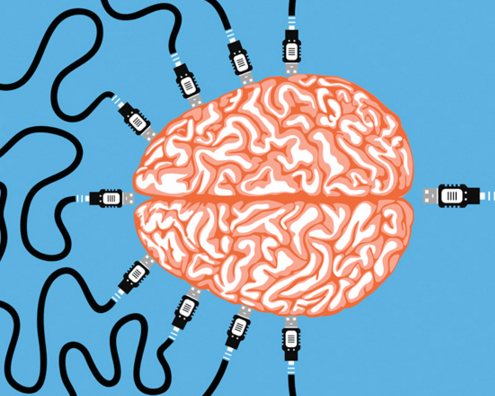Emails, Facebook, Snapchat, Messenger, Instagram, Twitter, and repeat. Digital content is never more than a swipe or click away; it has a pervasive presence casting a shadow on users’ everyday lives—and at times, the online world can prove difficult to escape.
While technology can help to foster creativity and aid with time management, it also quickly becomes a distraction from the same work it is supposed to facilitate. Students especially are all too familiar with its compulsive influence: One minute they’re doing an academic reading, the next they’ve unwittingly spent an hour scrolling through their Twitter and Facebook feeds.
While educated millennials remain the most avid consumers, tech’s influence extends to far broader demographics. These days, a large majority of developed countries’ general population owns at least one technological device. As of November 2016, nearly eight in 10 Americans owned a desktop or laptop computer. The same report indicates that 95 per cent of Americans own a cell phone of some kind. Of that 95 per cent, over three-fourths of Americans possess a smartphone.
Such widespread ownership can lead to unfettered, if not often excessive, exposure to technology for many. In 2016 a study found that adults in the United States consume around 10 hours and 39 minutes of media on average every day.
This behaviour has led researchers to investigate its psychological and neurological consequences on users. Chiungjung Huang of the National Changhua University of Education in China recognized similarities between internet and technology addiction and other compulsive behaviours such as substance abuse. The human brain finds itself trapped in comparable cycles of dependence between the two; with both technology use and substance abuse, the mind pathologically pursues a reward, sometimes regardless of cost, which can be reflective of addiction. Models used to measure the extensiveness of technological addiction—such as the Chinese Internet Addiction Scale (CIAS)—assess the main consequences of an individual’s compulsive behaviour. These symptoms include obsessive use, withdrawal anxiety, the development of tolerance to screen time, interpersonal and health-related issues, and time management problems.
Laura Wiebe, U4 Arts, identifies similar patterns in her own media consumption behaviour.
“Always keeping up with what is happening to my friends and what is going on right at this second sometimes becomes a little too much for me, and I lose focus on what I am doing and what actually matters,” Wiebe said. “When you are always […] assuming that someone is doing something more productive than what you are doing, it can lead to negative thoughts.”
One solution to help alleviate the negative effects of digital dependency is a detox. The digital detox simply requires that obsessive tech users refrain from interaction with electronic devices for a designated period of time. The flexibility of the duration—a detox can last anywhere from a few hours to a few days—makes it an easy habit to incorporate into one’s daily life.
Wiebe likes to accommodate digital detoxes into her busy academic schedule. She frequently spends the day on campus without her phone, which she leaves at home, or shuts off her laptop for a few hours at a time.
“I usually do some sort of digital detox, even just for a few hours, each month, and then during the summer I will [restrict myself to] weeks, sometimes months of limited screen time,” Wiebe explained.
Rebecca Jacobson, a recent graduate from the Schulich School of Music in Violin Performance, takes a different stance on the digital detox: She prefers to engage in short digital detoxes while she works out.
“Running is sort of my designated time away from my phone so I don’t feel obligated to respond to texts, and since I often run on the mountain or in parks, I can listen to what’s around me and pay more attention to my surroundings,” Jacobson said. “It’s a nice way of slowing my life down.”
By spending time away from their electronic devices, digital detoxers reap essential mental health benefits. They are able to better focus on their needs, rather than that of others constantly clamouring for attention on the other side of their screen.
“Sometimes it’s overwhelming to be constantly connected and expected to respond to people about plans,” Jacobson remarked. “So I think this meditative alone time, combined with physical exercise, has been really good for my mental health.”
In order to successfully engage in digital detoxing, mindfulness is key. Setting a purposeful intention for the detox, such as reducing anxiety or concentrating on developing more meaningful face-to-face relationships, can help with the motivation to respect one’s time away from technology. Furthermore, easing into the process by setting oneself reasonable time limits will guarantee a better chance of success.
“I would recommend starting with shorter periods of time and actually doing something in the time you’ve set for yourself,” Jacobson said. “Read a book, or exercise, or spend time with friends, so that you’re naturally distracted
With a little preparation and effort, a digital detox can help reduce the anxiety associated with overindulgent screen exposure, promote the development of real-time relationships, and also offer the hindsight necessary to navigate the technological world more consciously.
“You will think it is so hard for the first few times,” Wiebe said. “But then you will start to realize that you really don’t care what is happening on Instagram at 2 p.m. on a Wednesday.”









